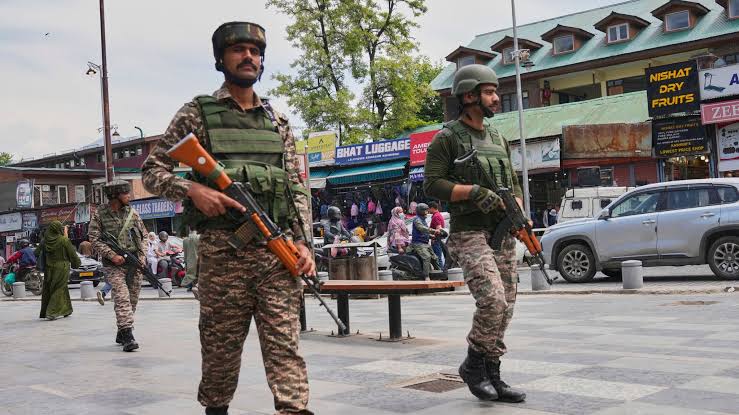Tensions between India and Pakistan have escalated dangerously in recent days, sparking fears of a broader conflict between the two nuclear-armed nations.
The conflict, which reignited after a deadly terrorist attack in Indian-administered Kashmir, has triggered missile strikes, border clashes, and diplomatic breakdowns.
AFRIPOST brings you everything you need to know about the ongoing situation below:
What Sparked the Tension?
The latest round of hostilities began on April 22, 2025, after a coordinated terrorist attack in Pahalgam, a popular tourist town in Jammu and Kashmir, left 27 people dead, including 25 Hindu pilgrims.
The Resistance Front (TRF), a group believed to be linked to Pakistan-based Lashkar-e-Taiba, claimed responsibility for the attack.
India blamed Pakistan for harbouring and supporting terrorist groups operating in Kashmir, an allegation Islamabad has strongly denied.
India’s military response
In retaliation, India launched Operation Sindoor on May 6, conducting precision missile strikes on at least nine suspected terrorist camps located within Pakistan and Pakistan-administered Kashmir.
According to Indian media reports, these sites were described as “training and operational hubs” used by militants responsible for cross-border attacks.
Though the Indian government has not disclosed casualty figures, local reports suggest dozens were killed or injured.
Pakistan’s reaction
The Pakistani government condemned the strikes as a “blatant violation of sovereignty” and labelled them an “act of war.” In response, Islamabad claimed to have shot down five Indian fighter jets and vowed to retaliate.
While India has not confirmed the loss of any aircraft, the Line of Control (LoC) has since witnessed heavy shelling and civilian casualties on both sides.
The Pakistani military has also placed its forces on high alert and summoned international allies to intervene diplomatically.
Water war adds fuel to the fire
Adding another layer to the conflict, India announced the suspension of the Indus Waters Treaty, a key water-sharing agreement brokered by the World Bank in 1960.
India has also accelerated work on hydroelectric projects in Kashmir, prompting Pakistan to raise concerns over the drying up of its farmlands and rivers.
Pakistan’s Foreign Office has warned that these actions could be interpreted as environmental warfare, threatening to escalate the situation further.
Global reactions
The United Nations, United States, China, Russia, France, and the United Kingdom have all expressed grave concern over the developments.
UN Secretary-General António Guterres has urged both nations to exercise restraint and return to diplomatic dialogue.
The United States, which maintains defence and economic ties with both nations, has offered to mediate. However, both India and Pakistan have so far stuck to hardened positions.
What happens next?
With the possibility of full-scale war looming, the world is closely watching South Asia. Both countries possess nuclear weapons and large standing armies, making any conflict between them highly dangerous, not just for the region but for global peace.
Analysts believe that unless backchannel diplomacy resumes, the situation could deteriorate rapidly.
For now, civilians along the border regions continue to bear the brunt of the conflict, with hundreds already displaced from their homes.
Summary of the major events between Indian and Pakistan as tension escalates
April 22, 2025: Terrorist attack kills 27 in Kashmir.
May 6, 2025: India launches missile strikes under Operation Sindoor.
Pakistan responds, claims to shoot down Indian jets.
Indus Waters Treaty suspended by India.
Global powers call for de-escalation.
LoC sees increased shelling, civilian casualties reported.


